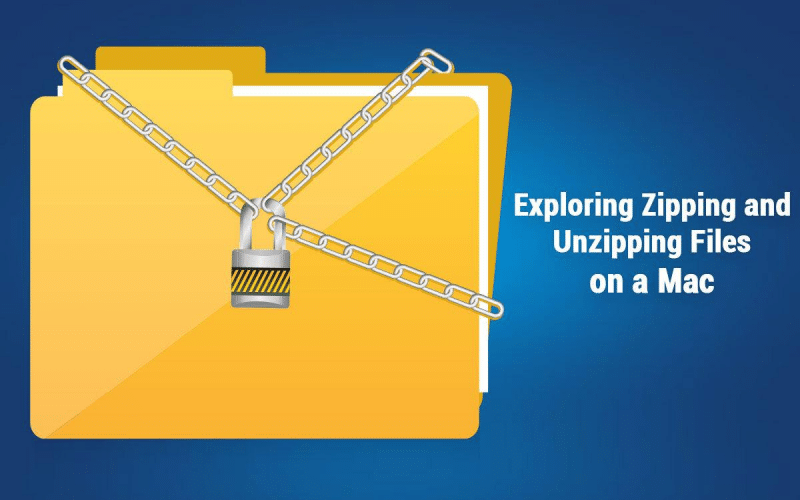Compressed files and archives are common nowadays. These files and folders take up less space, making it easier to share or upload them across platforms and devices. In this article, you will explore zipping and unzipping files on a Mac.
What is the Meaning of a Zip File?
The digital workspace will not survive without file compression, and zipping files and folders is a lossless way to archive and compress them. Zip files use compression to send large files carrying extensive data faster.
Zip is a format used to compress one or multiple files together into a single location. As a result, the file size is reduced, making storing or transporting the files easier. In addition, the recipient can extract or unzip a file to use it in the original format.
So, how is a zip archive file identified? Simple. It is identified with the .zip extension at the end of the file name and a zipper running up the middle of the file.
Zipping files is a time-tested method, essentially unchanged, but its use cases have expanded. For example, you can zip files to reduce their sizes and send bundles of documents and folders via email and other platforms. You can also use it to send large folders of images or videos. Moreover, the games or applications downloaded from the Internet are also compressed or zipped, so they take up less space and are downloaded faster. Finally, you can unzip the files to use them.
How to Zip Files on Your Mac?
There are different ways to zip files on your Mac.
- Archive Utility – This is the in-built macOS utility for zipping (and decompressing) files. The utility is found in the Applications > Utility folder, and the method is straightforward. Find the file or files you want to zip, right-click on the folder or file and choose Compress. The zipped folder or file will be created in the same location as the file or folder.
- Terminal – You can use Terminal to compress files or folders. On Terminal, enter the Mac zip folder command line % tar -czf LotsOfFiles.tgz [folder name] and press enter. You can also use Terminal to encrypt the zip archive by opening the tool > typing cd desktop > pressing enter > enter zip -e [zipped filename] > pressing enter. Then, the tool will ask you to assign and verify a password. Next time you open the zipped file, you must enter the password.
- Finder – Locate and choose the files you want to zip. Right-click on the selection and select Compress. You will find the compressed file or folder in the same location in Finder.
Besides in-built macOS tools and utilities, you can also use third-party tools like Archiver or BetterZip. These tools are user-friendly and not as nerve-wracking as using Terminal and memorizing commands.
How to Unzip Files on Your Mac?
Unzipping a zipped file or folder on your Mac is straightforward and fuss-free, thanks to the in-built Archive Utility tool.
After downloading the zipped file, double-click on it, and the file will automatically be decompressed by Archive Utility. It will be decompressed in the same folder as the compressed file. You can manually change the location.
You can access the extracted files by clicking the appropriate icons.
Besides this, you can also unzip files on a Mac using Finder. Locate the .zip file > double-click it, and this will show you the contents of the zipped folder.
Can You See the Zipped Contents without Extracting Them?
If multiple files and folders are zipped together, it is essential to be able to view the contents before extracting them. You can use BetterZip to preview the compressed folders and files on the right side of the screen. Simply select the files, and the preview will be available. This app even allows you to extract a separate file from the zip archive.
What are the Advantages of Zipping Files and Folders
Compressed or zipped files and folders save storage space and boost the efficiency of your Mac. It is also an efficient way to enhance file transfers with email. Since the file size is reduced, it allows you to send emails faster. Also, the format encrypts data and ensures it is safe. This helps maintain your security and privacy when sending files over the web.
In short, zipping files is an effective and simple way to maximize file handling efficiency. It is also a straightforward process to zip and unzip files on your Mac.
When to Zip Files or Folders?
You can compress files and folders whenever you need to send large data at faster speeds over the Internet. This is why it is an essential file format in business settings.
The Bottom Line
Zipping and unzipping files on a Mac is a fairly straightforward process. Use this format to share and store extensive amounts of information.






